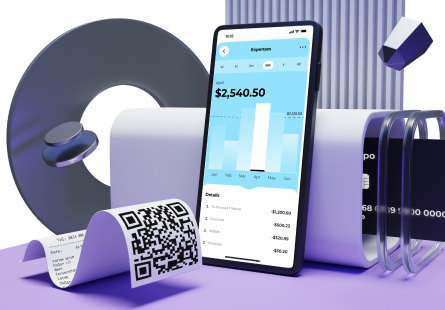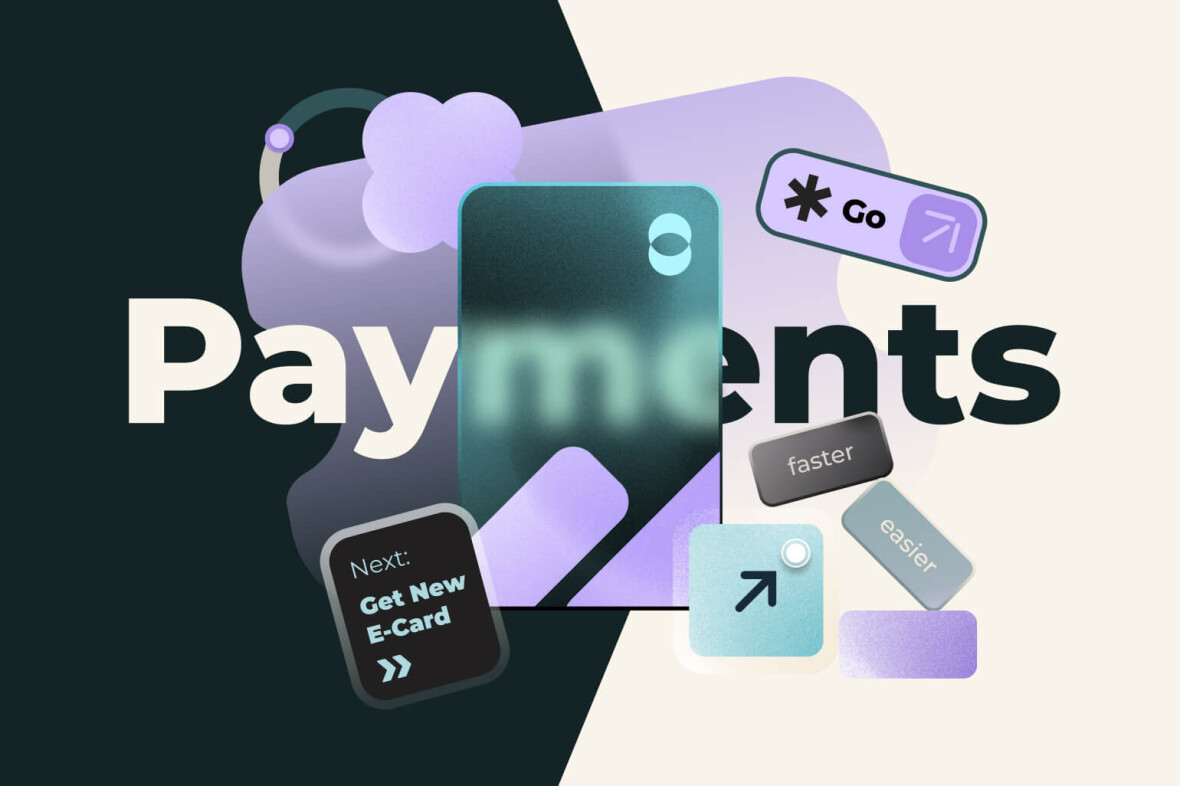With cashless payment volumes skyrocketing in recent years, the electronic payments sector is experiencing a significant boost. Dynamic economic conditions combined with the need to meet consumer expectations and ensure secure transactions have triggered some strong digital payment trends.
Businesses need to catch up with mobile payment trends for several reasons. Consumer preferences are one of the main factors shaping payments trends, meaning that companies following them can deliver better digital experiences to their customers. Another reason to keep your fingers on the pulse of mobile payment trends is security, which is critical in the financial services industry. By adopting global leaders’ security practices, payment providers can substantially strengthen their cybersecurity strategies.
Let’s explore the brightest 2024 trends in mobile payment that are set to transform the payment industry.
6 key trends in payments to watch in 2024
1. Expanding contactless transaction applications
Having become a vital necessity during the COVID-19 pandemic, contactless payments are steadily growing in popularity and are expected to reach $10 trillion in volume by 2027. And this isn’t surprising — contactless payments are quick and convenient, driving both consumers and businesses to massively adopt this payment method.
While contactless transactions have become a regular part of the payments landscape, there’s more to them than smooth financial transactions. Innovative businesses are exploring alternative use cases for this technology to improve customer experiences and deliver better value.
Beyond serving as a standard payment credit/debit card, a virtual card can store transit passes and digital copies of documents and function as an authentication key for accessing connected services.
2. Mobile wallets are no longer an alternative payment option
The popularity of contactless payments has sparked a mobile payment trend and, consequently, increased adoption of digital wallets. They are expected to become the most widespread online payment method by 2024. If this trend keeps growing, credit cards will become fully digital in the next ten years.
It’s worth mentioning that this payment technology is gaining substantial traction across geographies with poor banking infrastructure, where the unbanked and underbanked population is widely using telco-issued mobile money wallets for cashless transactions.
Moreover, many financial institutions are replacing traditional bank accounts with digital wallets, which is especially popular in countries with predominantly young populations. One prominent example is Thailand’s PromptPay, which has exceeded a staggering 56 million users in a country with a total population of 71 million.
3. Open Banking enabling innovative payment services
Open Banking is a practice that allows third-party financial service providers to access consumer banking, transactions, and other financial data from banks through application programming interfaces (APIs).
This encourages fintechs to develop new financial products and services, fostering innovation and competition within the financial industry. Among other use cases, Open Banking enables streamlined account aggregation, improved lending processes, seamless customer authentication, and personal finance management.
The Open Banking initiative has also stimulated payment innovations, such as Account-to-Account (A2A) payments. A2A payments directly transfer money from one account to another, eliminating the need for intermediaries or payment instruments like cards. While traditionally associated with bank-specific transactions, such as bill payments through bank transfers or direct debits, A2A payments now extend to various direct account payments, encompassing both bank and digital wallets.
Another way Open Banking is disrupting the payments industry is by streamlining recurring B2B payments, effectively closing the need for Variable Recurring Payments (VRPs). VRPs revolutionise the payment landscape by allowing customers to securely link authorised payment providers to their bank accounts to make payments within agreed limits. The Competition and Markets Authority (CMA) mandated nine UK banks, known as the CMA9, to implement a VRP open banking API, facilitating the effortless transfer of funds between a customer’s current accounts.
This innovative payment method has the potential to usher in a new era in consumer and business banking. VRPs offer enhanced control and transparency compared to existing alternatives like Direct Debits and card-on-file instructions. Unlike traditional methods, VRPs provide continuous authorisation for payments within agreed-upon parameters, offering a more seamless and secure way to pay for goods and services. Take, for instance, subscription payments for entertainment services, software, gyms, etc. With VRPs, customers can easily view the institutions they’ve authorised for recurring payments and the specified limits for each payment permission.
4. Using ML for fraud prevention
Payment fraud is a major concern in the context of digital payments — according to the J.P. Morgan Chase report, 71% of organisations globally experienced payment fraud attacks in 2021.
Assuming that the sophistication of fraudulent activities continues to increase, financial services organisations need to implement strong security measures to fight payment fraud.
Machine learning (ML) has proved an effective technology for preventing fraud. Machine learning algorithms allow computers to identify patterns and make decisions or predictions, adapting and improving their performance over time.
In the context of payments, ML algorithms use historical data records that include normal or abnormal transactions to detect anomalies in real-time. These systems are usually rules-based, i.e., the algorithm utilises rules to assess the legitimacy of digital transactions and issue a decision.
For instance, a new service from Experian, Mule Score, is aimed at helping banks and building societies detect and shut down ‘money mule’ accounts used for housing fraudulently obtained funds. As per Experian’s data, 42% of first-party current account fraud is now related to money mules, with a 13% increase in the fraud rate for current accounts in the first three months of the year. The service analyses account opening history and turnover activity, utilising bureau data and characteristics from over 200,000 confirmed mule cases to help banks identify potentially fraudulent account activity in their portfolios. In trials, the system accurately identified over 50% of the highest-risk mule accounts.
Another good example is Stripe’s fraud detection system, Radar, which analyses a range of parameters, including charge signals (time of day, card type, card to IP address distance), device signals (screen size, font type, proxy use), behavioural signals (time spent browsing, number of pages visited), aggregate signals (email and cardholder match, historical data of a card, countries tied to the card), etc.
5. Point-of-Sale embedded lending
One of the most rapidly growing digital payments trends, the concept of embedded lending at POS, is revolutionising the traditional lending and payments space.
Consumer demand for POS lending has gone beyond retail payments to healthcare, education, and B2B transactions. Besides providing an opportunity to obtain essential supplies while effectively managing their cash flow, POS-embedded lending lets banks and credit institutions acquire and retain customers more efficiently.
Both B2C and B2B businesses are expected to massively adopt POS-embedded lending in the following few years. In addition to effectively addressing customer expectations, this approach enables businesses to foster customer loyalty and drive sales.
6. Banking as a Service (BaaS) driving the emergence of “super apps”
BaaS allows fintech companies and other non-bank entities to access the infrastructure and data of traditional banks. Through BaaS, third-party companies can integrate various financial services into their applications without creating a banking infrastructure from scratch, including payments, loans, and other banking functionalities.
This way, BaaS enables “super apps,” which combine multiple services, including payment and financial transaction processing, such as Alipay and WeChat in China, Tata Neu in India, and Grab in Southeast Asia.
By integrating diverse functionalities within a single platform, businesses can redefine how consumers manage their financial activities, simplifying their financial journey and fostering a more holistic approach to financial management.
Conclusion
It’s safe to say that digital payments trends all revolve around consumer needs and expectations. By following these trends, you can deliver more value to your customers, increasing sales and revenue in the long run.
If you have an idea about how to leverage the current payment trends, get in touch with us. We have over 23 years of experience building successful digital products focusing mainly on financial applications and can help you create a tailored solution to meet your customers’ expectations.







